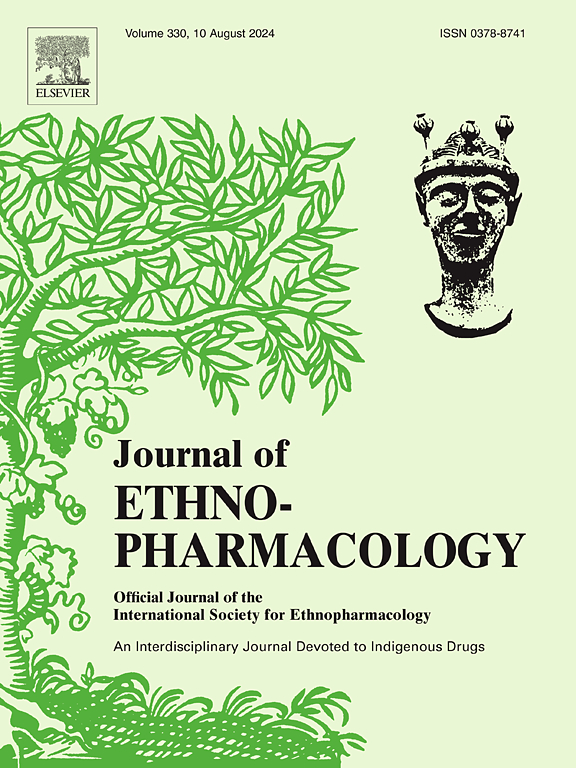Effects of repeated administration for 28 Days of fixed oil from Syagrus coronata (Mart.) Becc. On toxicological patterns in mice
IF 4.8
2区 医学
Q1 CHEMISTRY, MEDICINAL
引用次数: 0
Abstract
Ethnopharmacological relevance
Syagrus coronata (Mart.) Becc. is a plant traditionally used in medicine for its anti-inflammatory, anti-venom, antifungal, wound-healing, and pain-relieving properties, which served as the basis for this study.
Aim of the study
This study aimed to evaluate the toxicity of repeated doses of S. coronata fixed oil (ScFO) over a 28-day period.
Materials and methods
Following OECD 407/2008 guidelines, the repeated-dose toxicity study assessed the effects of ScFO on motor function, exploratory behavior, hematological and biochemical parameters, histopathology, and oxidative stress.
Results
Behavioral tests indicated increased grooming and reduced exploration, suggesting potential anxiolytic and sedative effects. In the rotarod test, sex-dependent differences in motor coordination were noted, particularly in females. Hematological analysis showed leukocytosis at the 1000 mg/kg dose, indicative of an immune response to stress. Elevated hepatic and renal markers at 500 and 1000 mg/kg doses suggested possible organ damage, alongside a decrease in total cholesterol levels. No macroscopic changes in organ appearance were observed, and liver weights remained consistent across groups. Histopathological examination showed no significant tissue alterations. ScFO treatment reduced oxidative stress markers and enhanced antioxidant enzyme activity.
Conclusions
Although macroscopic and histopathological findings support the safety of ScFO, the adverse biochemical effects observed warrant caution with prolonged use. These results highlight the importance of comprehensive toxicity evaluations to fully understand the safety and therapeutic potential of novel compounds.

求助全文
约1分钟内获得全文
求助全文
来源期刊

Journal of ethnopharmacology
医学-全科医学与补充医学
CiteScore
10.30
自引率
5.60%
发文量
967
审稿时长
77 days
期刊介绍:
The Journal of Ethnopharmacology is dedicated to the exchange of information and understandings about people''s use of plants, fungi, animals, microorganisms and minerals and their biological and pharmacological effects based on the principles established through international conventions. Early people confronted with illness and disease, discovered a wealth of useful therapeutic agents in the plant and animal kingdoms. The empirical knowledge of these medicinal substances and their toxic potential was passed on by oral tradition and sometimes recorded in herbals and other texts on materia medica. Many valuable drugs of today (e.g., atropine, ephedrine, tubocurarine, digoxin, reserpine) came into use through the study of indigenous remedies. Chemists continue to use plant-derived drugs (e.g., morphine, taxol, physostigmine, quinidine, emetine) as prototypes in their attempts to develop more effective and less toxic medicinals.
 求助内容:
求助内容: 应助结果提醒方式:
应助结果提醒方式:


